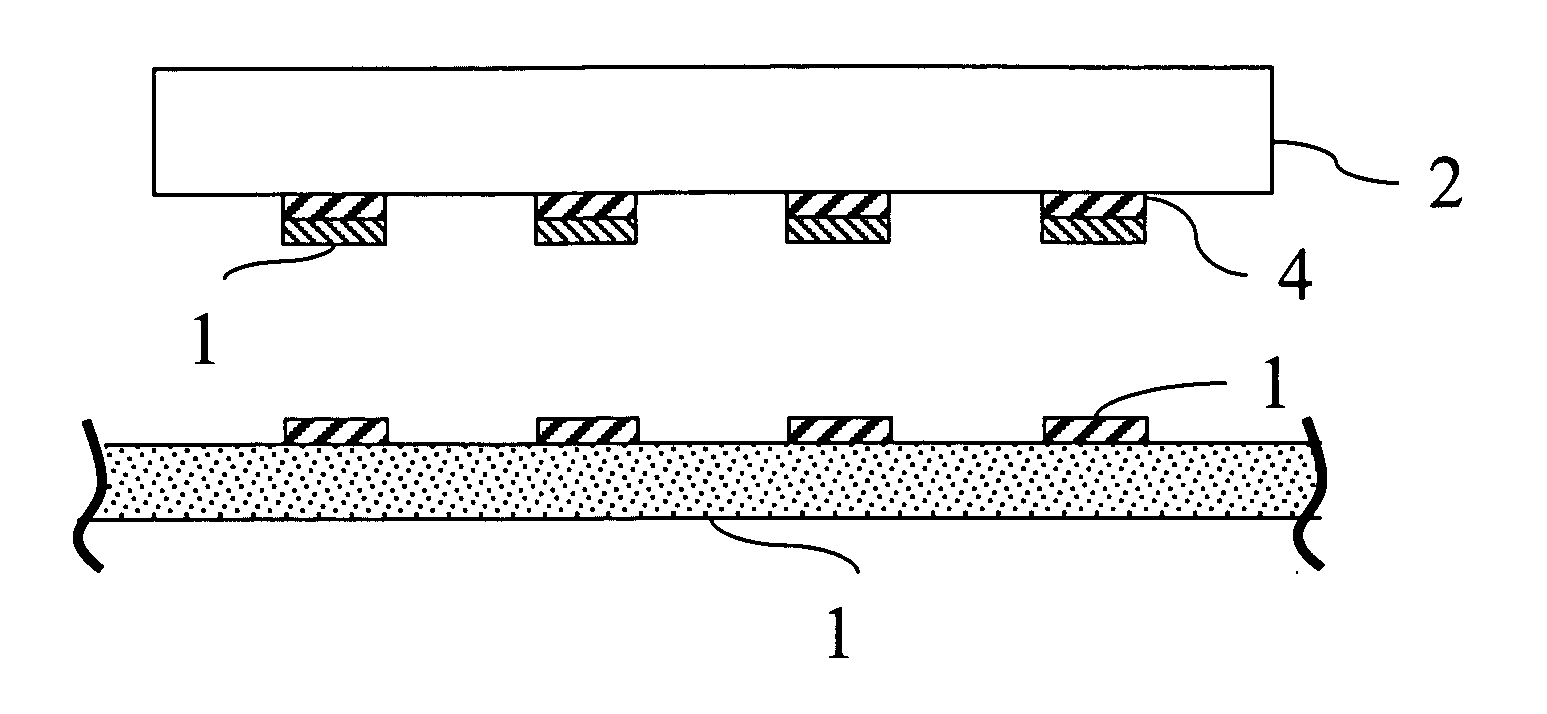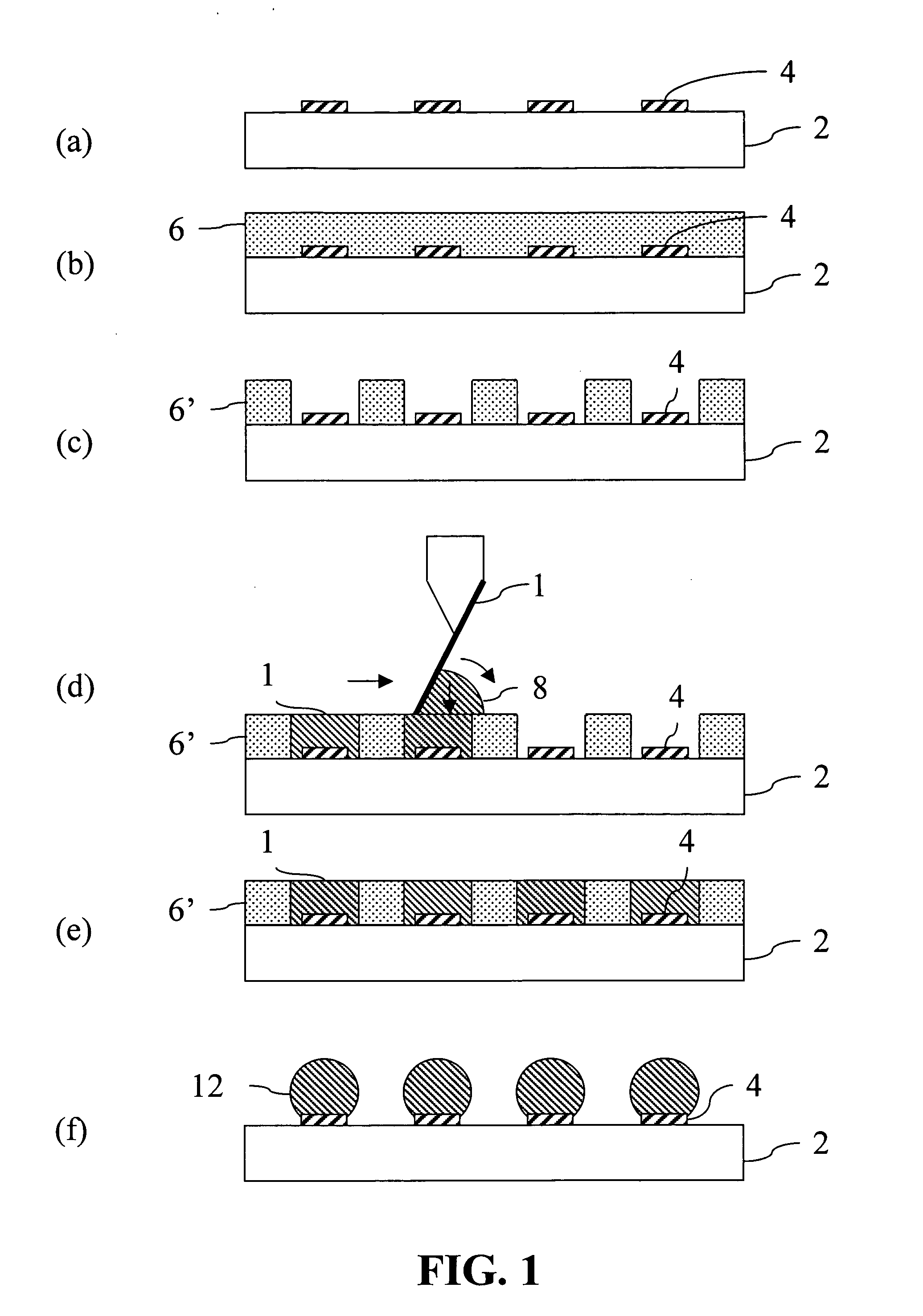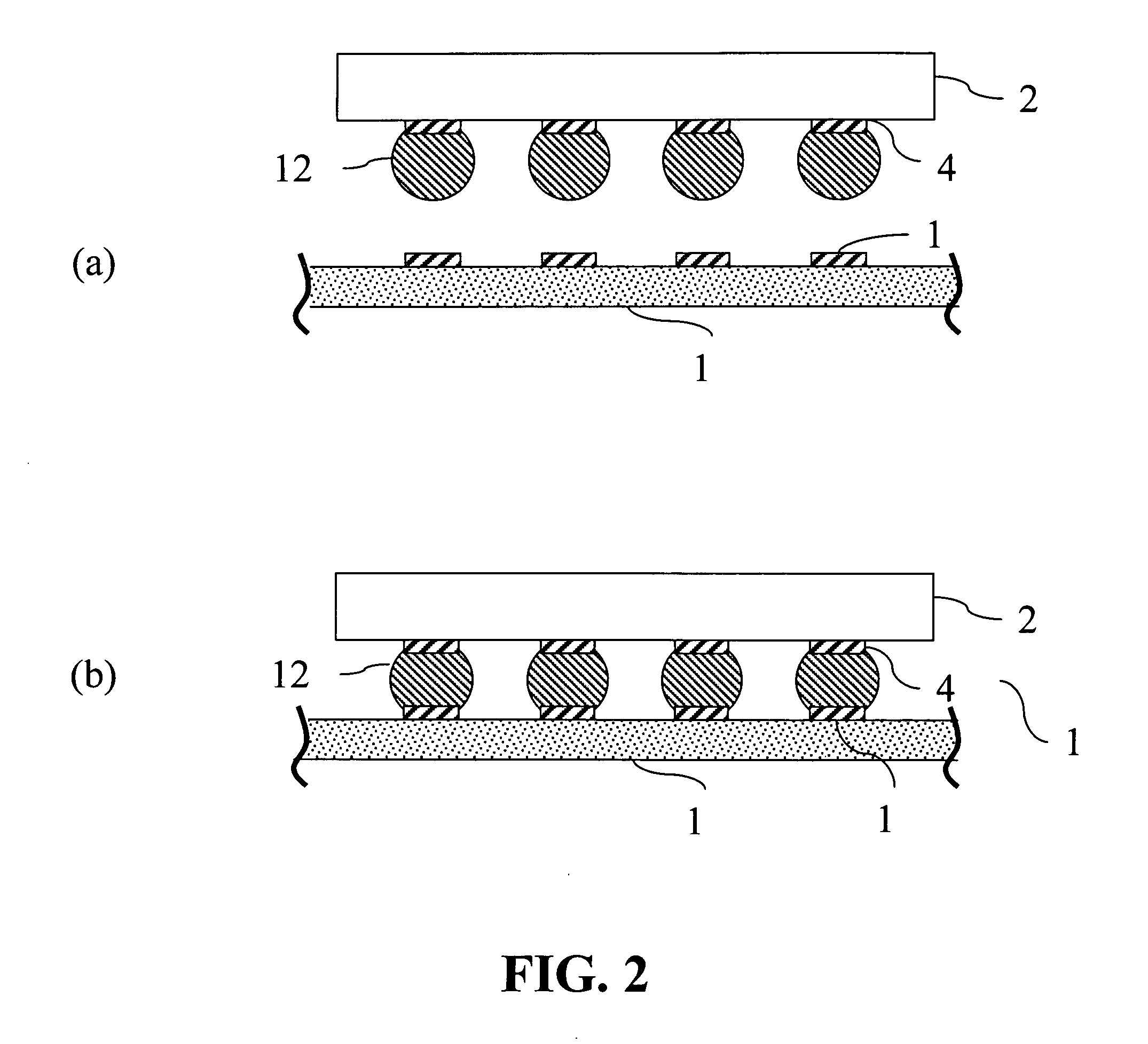Methods of forming solder areas on electronic components and electronic components having solder areas
a technology of electronic components and solder areas, which is applied in the direction of conductive pattern formation, manufacturing tools, and soldering apparatus, etc., can solve the problems of affecting the physical and/or electrical properties of the contact, requiring a significant capital investment for processing equipment, and evaporation bumping generally requires a significant amount of capital investmen
- Summary
- Abstract
- Description
- Claims
- Application Information
AI Technical Summary
Benefits of technology
Problems solved by technology
Method used
Image
Examples
examples 1-10
[0044] Nanoparticle solder pastes in accordance with the invention are prepared as follows. A 0.25M benzoic acid solution is prepared from 0.92 g of benzoic acid and 20 ml diethyl ether. 86 g of solder alloy nanoparticles are added to the solution and soaked for an hour with occasional stirring. The powder slurry is rinsed and dried. A rosin-based flux is prepared from 50 wt % rosin, 41 wt % glycol solvent, 4 wt % succinic acid, and 5 wt % castor oil. The flux is added to the metal particles to form a paste with 88 wt % metal by weight, as described in Table 1. The resulting solder pastes are used to form solder areas on electronic devices as described below.
[0045] Semiconductor wafers having IC chips formed on the surface thereof are provided. Each IC chip has 64 contact pads (200 μm on each side) at a pitch of 100 μm. A metal mask is placed in contact with the surface, the mask having openings with a diameter of 150 μm exposing the contact pads . Solder paste is spread across the...
PUM
| Property | Measurement | Unit |
|---|---|---|
| diameter | aaaaa | aaaaa |
| diameter | aaaaa | aaaaa |
| temperature | aaaaa | aaaaa |
Abstract
Description
Claims
Application Information
 Login to View More
Login to View More - R&D
- Intellectual Property
- Life Sciences
- Materials
- Tech Scout
- Unparalleled Data Quality
- Higher Quality Content
- 60% Fewer Hallucinations
Browse by: Latest US Patents, China's latest patents, Technical Efficacy Thesaurus, Application Domain, Technology Topic, Popular Technical Reports.
© 2025 PatSnap. All rights reserved.Legal|Privacy policy|Modern Slavery Act Transparency Statement|Sitemap|About US| Contact US: help@patsnap.com



